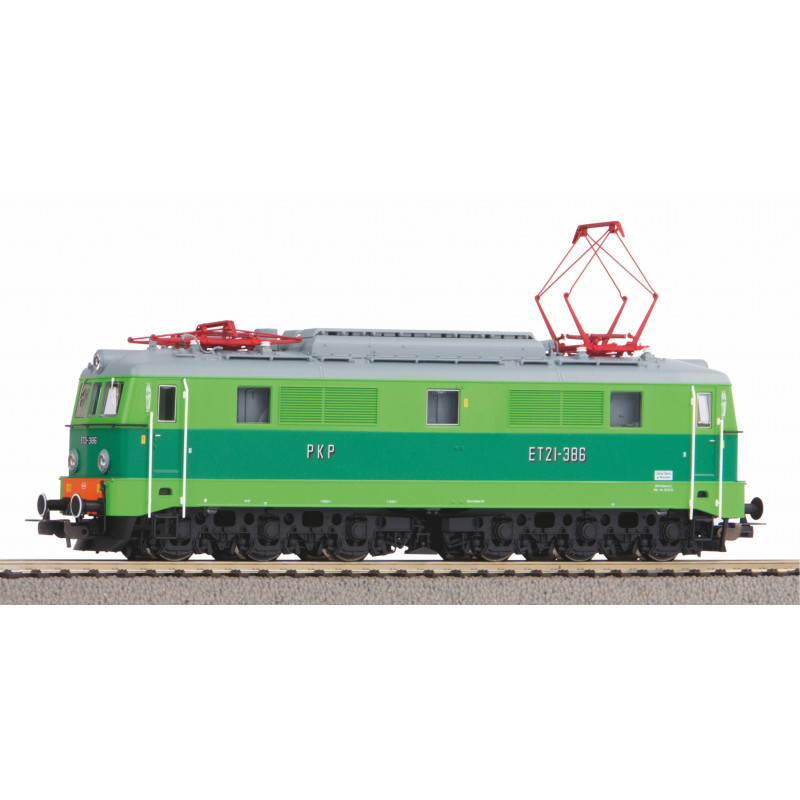In 1958 ,production of the first Polish freight electric locomotive began at the Pafawag plant in Wroclaw .Two prototypes and 18 series machines underwent thorough testing, resulting in design changes in another 70 units. By 1971
a total of 658 locomotives of this type were delivered. Reaching a top speed of 100 km/h, the machines were designed to run a train of 2,400 tons at 70 km/h in level terrain .ET21-series locomotives could be found for along time on virtually the entire electrified network in Poland. With the increasing number of ET22-series machines , ET21-series locomotives were gradually pushed out to the south of the country. Originally theET21 series was to be withdrawn from service as early as2002, but the locomotives served much longer, and can still be found todayin the colors of private carriers.
Novelty 2022: PIKO pays homage to this historic locomotive in H0 scale. The result is a model that perfectly captures the character of the original. Typical features of the PIKO Expert models can also be found in the ET21: precisely engraved and extremely artistic-looking fan grilles, precisely openworked bogie panels and extremely filigree roof equipment. These features are complemented by an absolutely prototype paint scheme and equally accurate printing. The model is powered by a five-speed PIKO engine with two flywheels. The locomotive has a factory-built PluX22 sound decoder.
Model specifications:
- Manufacturer: PIKO
- Scale: 1/87 H0
- Product code: 51607
- Locomotive type: ET21-386
- Designation: PKP
- Epoch: V
- Length: 193mm
- Minimum turning radius: 358mm
- Power system: direct current
- Digital interface: NEM 658 PluX22
- Built-in decoder: PluX22 audio decoder
- Lighting (internal): Driver's room lighting digitally switched (with PluX22 decoder)
- Coupling: NEM shaft + short coupling link
- Sound: factory-installed PIKO sound decoder;
- Special features: driver's desk lighting
- Age: 14+
For more information and photos, visit the manufacturer's website.
A bit of history in the video:
ET21-157 PKP vs ET22-259 in miniature
And, when was the first PKP locomotive launched ?








